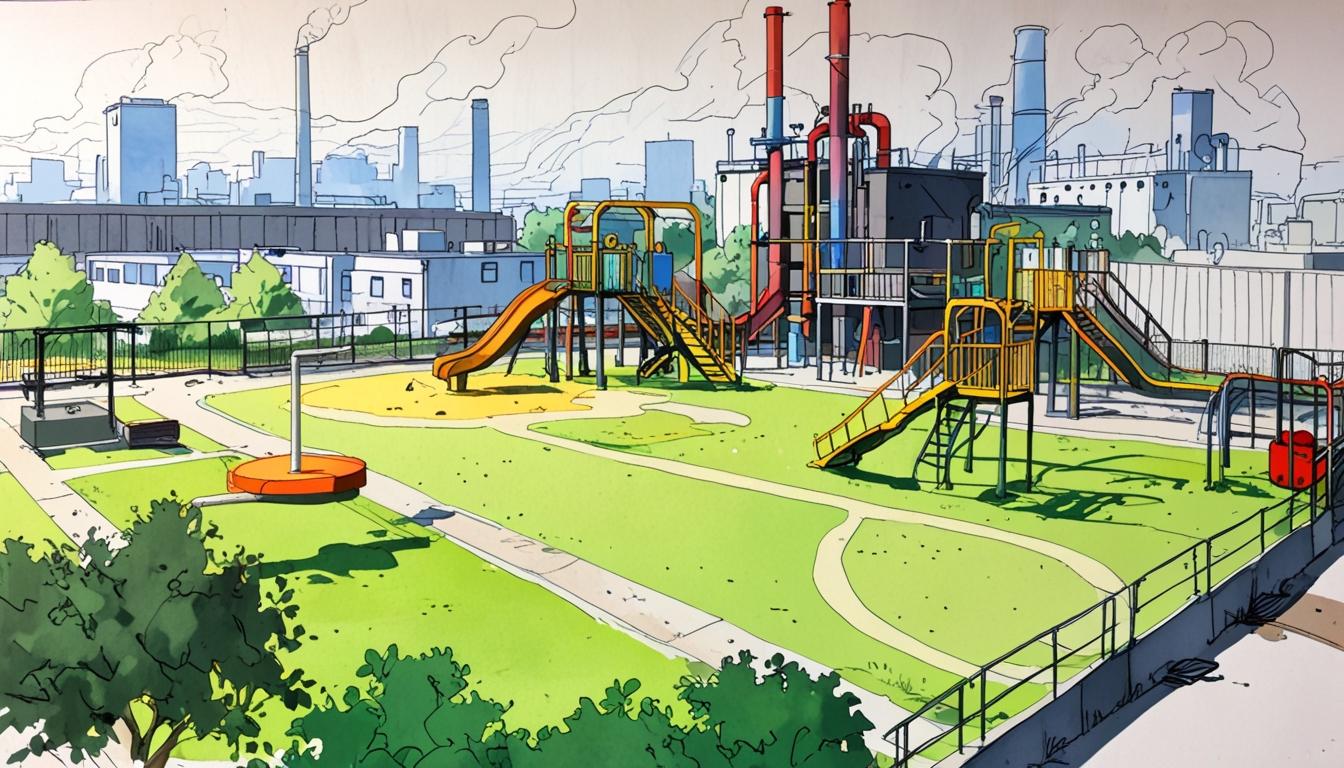A personal narrative recently published in The Guardian sheds light on the intersection of environmental contamination and reproductive health challenges experienced by Black communities, focusing on Englewood, New Jersey. The author recounts a childhood marked by fear of violence, symbolised by an incident involving the discovery of a gun in Denning Park during elementary school. However, with hindsight, the author recognises a more insidious and invisible threat—the environmental toxins associated with nearby industrial facilities—that may have adversely affected their reproductive health.
Denning Park, a community space bordered by factories including the LeDoux Corporation—a chemical testing company historically connected to significant projects such as the Manhattan Project and the moon landing—has been a focal point of concern. Although childhood fears centred on violent crime and weapons, the author endured severe menstrual pain attributed to endometriosis, requiring emergency room visits, surgeries, and considerable pain medication. These symptoms were frequently dismissed by medical professionals and attributed to psychological causes, without thorough investigation into potential environmental factors.
Data highlights disparities in environmental exposures among Black Americans; they are 75% more likely to reside near industrial facilities and experience air pollution levels 38% higher than those in white communities. A report by Human Rights Watch links air pollution to adverse pregnancy outcomes including gestational diabetes, pre-eclampsia, and fibroids. Specific contaminants such as heavy metals and industrial solvents have been associated with infertility and pregnancy complications through their endocrine-disrupting effects.
The author’s inquiry extended into creating a documentary focusing on how climate change-related phenomena—flooding, heatwaves, wildfires, hurricanes—disproportionately affect Black individuals who are pregnant or trying to conceive. Encounters with individuals such as Marquita from Tennessee, who spoke about societal blame directed at women facing infertility without considering environmental pollution, and Shamell from Louisiana’s so-called “Cancer Alley,” who linked chemical exposures to insulin resistance and ovulatory issues, underscore the widespread nature of these experiences.
A significant development occurred when the author’s mother revealed that Denning Park had been closed due to concerns about toxic contamination affecting a brook prone to flooding—a situation exacerbated by climate change. The community’s historical interactions with environmental hazards were documented by an elder who recalled the water in the park’s brook changing colours and a persistent sulphur smell likened to rotten eggs. Such accounts affirmed community fears about toxin exposure spanning decades.
In February, after a local city council meeting, it was announced that 37 samples collected from Denning Park tested negative for radiation, with no historical radiation incidents reported, leading to the park’s reopening. This decision was met with mixed reactions. While some residents welcomed the reopening, others demanded more extensive chemical testing, concerned about non-radiological contaminants. One council member criticised community complaints as political manoeuvring related to planned developments, including a cannabis factory and new apartment complex. He stated, “We need to ensure that discussions are based on knowledge, not wild speculation,” referring to community concerns. This comment drew attention due to a prior incident in 2005 involving a missing package of uranium near the park.
The narrative draws parallels to historical instances of environmental health warnings being dismissed. For example, in the 1980s, Louisiana pharmacist Kay Gaudet raised alarms about chemical exposure increasing miscarriages but faced scepticism from industry representatives. An official then dismissively remarked, “They say the chemical plants are causing the miscarriages, but they have no proof. I could say they screw too much, and that’s the cause of the miscarriages. But then I would have no way to prove that.”
These examples highlight the persistent challenges faced by communities in establishing connections between environmental exposures and health outcomes. The author notes that recent federal regulatory rollbacks have constrained the ability of agencies such as the National Institutes of Health and the Centers for Disease Control and Prevention to conduct environmental and reproductive health research.
Having moved away from Englewood, the author expresses unresolved concerns about the safety of Denning Park for their own children. Initially a place of joy and community, the park now represents the complex legacy of environmental injustice and the systemic neglect of Black and Brown communities’ health and voices. The piece underscores the importance of rigorous inquiry into environmental health hazards, cautioning against dismissing community concerns as “wild speculation,” which historically has hindered progress in recognising and addressing subtle yet impactful threats.
Source: Noah Wire Services
